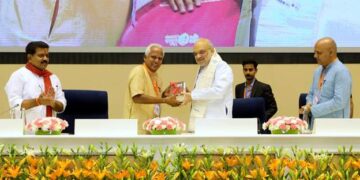By: Dr. Akhil Kumar Rustagi
The rise of minimally invasive procedures has significantly changed the discipline of cardiovascular care. A particular example of this is the latest technique of minimally invasive aortic valve replacement (procedure to replace a damaged heart valve). This method is changing the course of cardiac care in India, where approximately 300,000 heart procedures are performed each year.
The Evolution from Open-Heart Surgery
Traditionally, open-heart surgery has been the standard procedure for repairing or replacing a diseased aortic valve. This invasive method involves a large chest incision, lengthy recovery periods, and significant trauma to the patient’s body. However, with the introduction of minimally invasive techniques, cardiac surgeons now have the ability to perform intricate procedures with precision through much smaller incisions, offering patients several advantages over traditional open-heart surgery.
How the Procedure Works
Minimally invasive aortic valve surgery typically involves accessing the heart through small incisions in the chest, often between the ribs, rather than a large sternotomy (where the breastbone is divided). This approach allows surgeons to operate on the heart using specialized instruments and advanced imaging technology, such as video-assisted thoracoscopic surgery (VATS) or robotic-assisted surgery. These techniques provide enhanced visualization of the surgical field and greater control over surgical manoeuvres, contributing to improved outcomes and reduced recovery times for patients.
Surgical Benefits
One of the key benefits of minimally invasive aortic valve surgery is its potential to minimize trauma to surrounding tissues and organs. By avoiding a large incision and the need to split the breastbone, patients experience less pain, reduced risk of infection, and quicker recovery compared to traditional open-heart surgery.
The success of minimally invasive aortic valve surgery is underpinned by ongoing technological advancements and the expertise of cardiac surgeons specialized in these techniques. Surgeons undergo extensive training to master these minimally invasive approaches, ensuring optimal patient safety and surgical precision.
Patient Benefits
In terms of patient outcomes, studies have shown that minimally invasive approaches yield comparable results to traditional open-heart surgery in terms of efficacy and long-term durability of valve repairs or replacements. Patients undergoing minimally invasive procedures often report high satisfaction rates due to reduced pain and faster recovery. This approach also results in smaller scars, which can have significant psychological benefits.
Moreover, the shorter recovery times associated with minimally invasive techniques mean patients can return to their daily activities and quality of life more swiftly. This is particularly advantageous for older adults and individuals with underlying health conditions who may be at higher risk during prolonged recovery periods.
Future Directions and Innovations
The field of cardiac surgery continues to explore and refine minimally invasive techniques, aiming to further enhance patient outcomes and expand the applicability of these procedures to a broader range of cardiovascular conditions. Advances in imaging technology, robotics, and surgical instruments hold promise for continued innovation in minimally invasive cardiac procedures, benefiting patients worldwide.
Minimally invasive aortic valve surgery represents a significant advancement in cardiac care, offering patients a less invasive alternative to traditional open-heart surgery with reduced recovery times and improved outcomes.
The writer is Director & Head – Cardiothoracic & Vascular Surgery, Yatharth Hospital, Greater Noida





